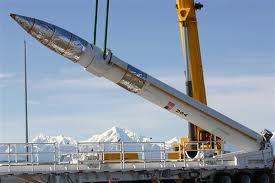
A new report raises doubts about whether the missile defense system housed largely at Fort Greely can protect the U.S. from a North Korean attack.
The Government Accountability Office says the Missile Defense Agency is compromising reliability with a rushed schedule as it expands the number of ground-based interceptors in Alaska to 40.
Cristina Chaplain, the report author, says the problem is the missile agency’s acquisition process. Chaplain says the agency overlapped the testing and production phases for its new missiles, to meet a 2017 deadline for installing them in the field.
“In essence, the Missile Defense Agency was buying, producing and emplacing these interceptors without really knowing whether they could work as intended,” she said. “And as you can imagine that caused a number of problems.”
Among the problems is a series of failed tests, which can cost more than $200 million apiece. Chaplain says the agency’s approach to developing ground-based missile defense has contributed to a cost increase of $1.75 billion and a delay of more than six years.
“So even when you’re in rush and you’re trying to get something in quickly, you may end up waiting longer for it because you’re continually in a cycle of correcting problems and testing them again,” she said. “And you’re also in a continual cycle of having to pay for tests when they don’t work, and they’re very expensive.”
The Missile Defense Agency did not issue a response to the GAO report when it came out Wednesday. A spokesman said Thursday they’re still reviewing it.
